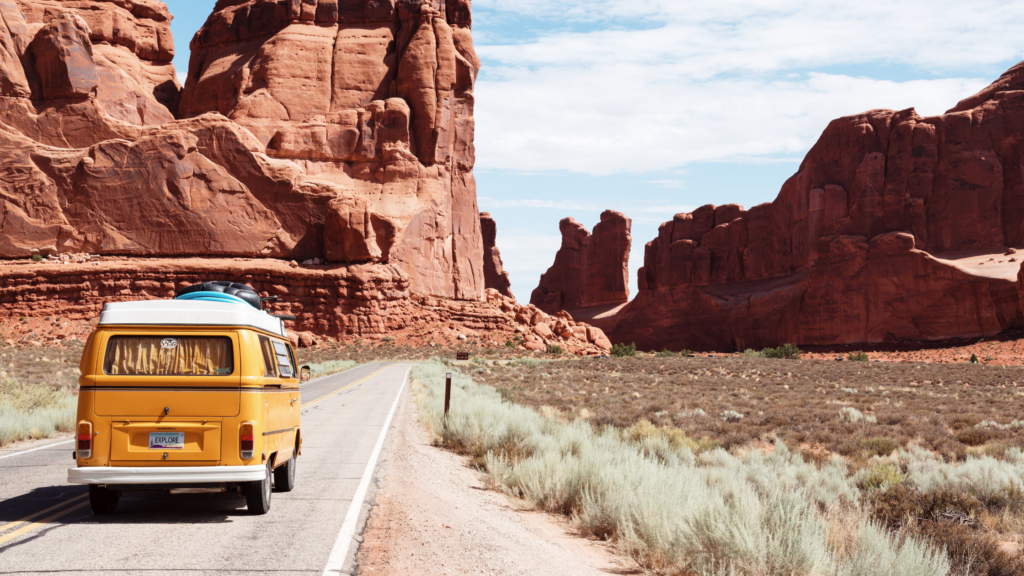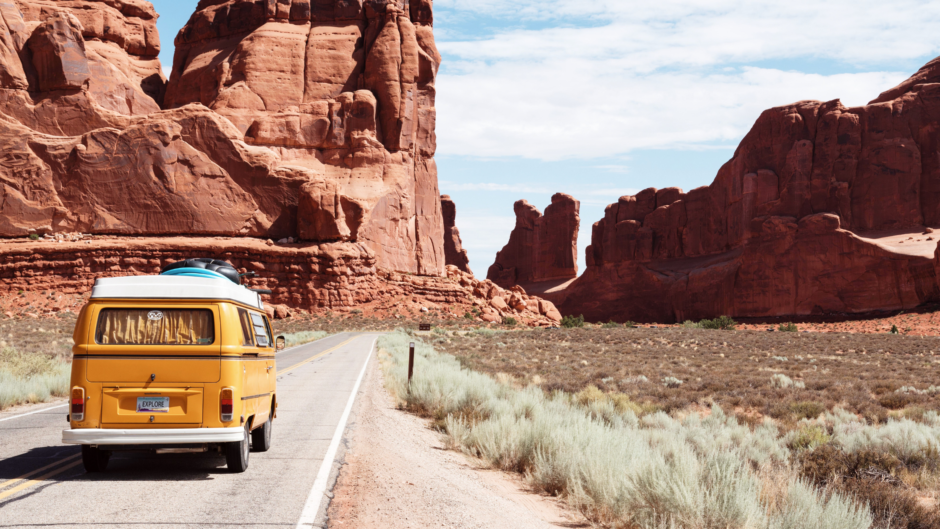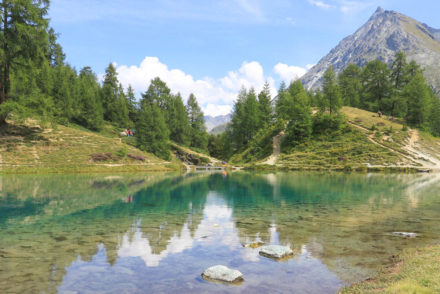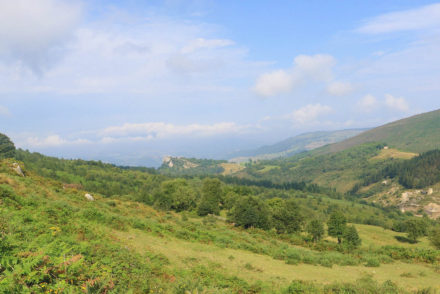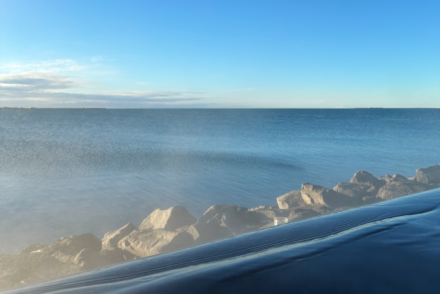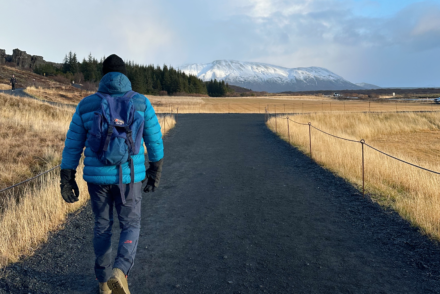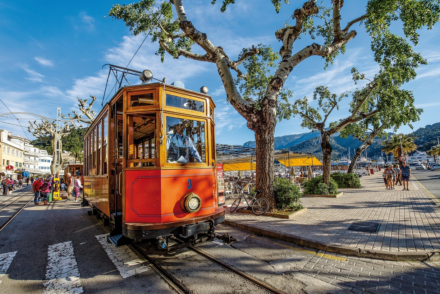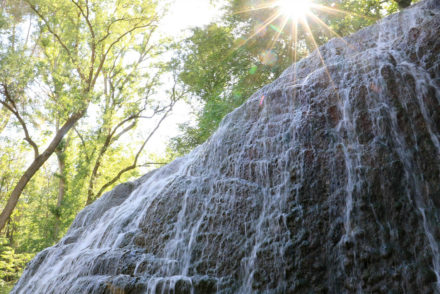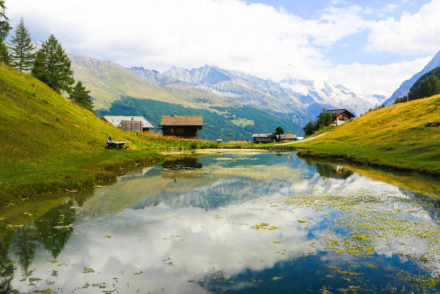Who doesn’t love a UK road trip? With dramatic scenery, rugged countryside and picturesque coastlines, the UK offers some of the best road trips in the world. From the North Coast 500, Causeway Coastal Route and The Cambrian Way to The Atlantic Highway, Jurrasic Coast and Coastal Way, we take a look at some of the UK’s most scenic journeys and what each offers.
The best UK road trips
South West
The Atlantic Highway
Stretching from Barnstable, North Devon to the outskirts of Newquay in Cornwall, the Atlantic Highway spans 70 miles of the A39. Places to see include Padstow, a fishing village and foodie destination, surrounded by 7 beaches and is a great base for exploring the South West Coast path. Padstow is also home to Prideaux Place, a Grade I listed Elizabethan country house, which has been in the Prideaux family for over 400 years. Boscastle is an unspoiled medieval harbour village on the North Cornwall coast in a Designated Area of Outstanding Beauty. Thomas Hardy, the English novelist and poet, met his first wife in Boscastle and it was the focus of much of his work. One of the most popular museums in Cornwall is located in Boscastle – the Museum of Witchcraft which has the world’s largest collection of witchcraft artefacts and regalia.
Port Isaac, of Doc Martin fame, is a well-known village located between Polzeath and the village of Tintagel. Tintagel itself has dramatic views from the castle on the headland said to be the birthplace of King Arthur. At Saint Nectan’s Glen, there’s a 60ft waterfall and a woodland walk amid ivy-clad trees. Bude is all about the beaches with Widemouth Bay, Summerleaze and the Bude Sea Pool. Finally, near Newquay is the Elizabethan manor and garden Trerice (National Trust).
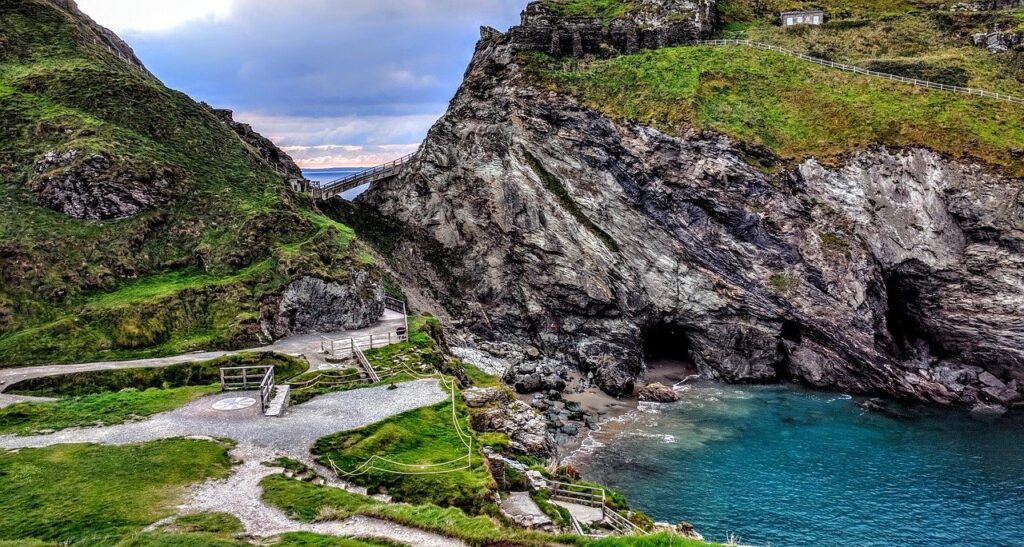
West Cornwall Coast Road
The West Cornwall Coast Road (the B3306) links St Ives to St Just and although it’s only 10 miles in length, it offers glorious views across the West Cornish coast. Often referred to as one of the most scenic drives in Cornwall, the road hugs the coastline with the sea one side and moorland on the other. Stop off to see the sea cliffs of Zennor Head, St Senara Church with its 15th-century bench end that depicts a mythical mermaid or visit mining remains in Geevor, Levant and Botallack. Once at St Just, head to Cape Cornwall to see where the distinctive headland juts out into the ocean which is part of the Tin Coast and Cornish Mining World Heritage Site.
Jurrasic Coast
Stretching 95 miles from Orcombe Point in Exmouth, Devon to Old Harry Rocks, near Swanage in Dorset, the Jurrasic Coast was inscribed as a World Heritage Site by UNESCO for the outstanding value of its rocks, fossils and landforms. It is England’s only natural World Heritage Site. One of the Jurrasic Coast’s most iconic landscapes is Durdle Door – the natural arch formed from a layer of limestone that stands vertically out of the sea. Durdle Door is part of the 12,000 acre Lulworth Estate (which includes Lulworth Cove) owned by the Weld family.
The rocks at Worbarrow Bay go back 80 million years with the bay and nearby Tyneham part of the MOD Lulworth Firing Ranges, access is restricted to weekends and school holidays. Worbarrow Bay is nestled between Lulworth Cove and Kimmeridge Bay if taking the South West Coast path. Kimmeridge Bay features some of the most important geology in the region and boasts some of the area’s most accessible marine wildlife. At West Bay, cliffs of sand reveal falling sea levels from 175 million years ago the Chesil Beach (some 18 miles long) was born from landslides after the last ice age is at the western end. The famous Golden Cap landmark is the highest point on the south coast of England with panoramic views from Portland to Dartmoor.
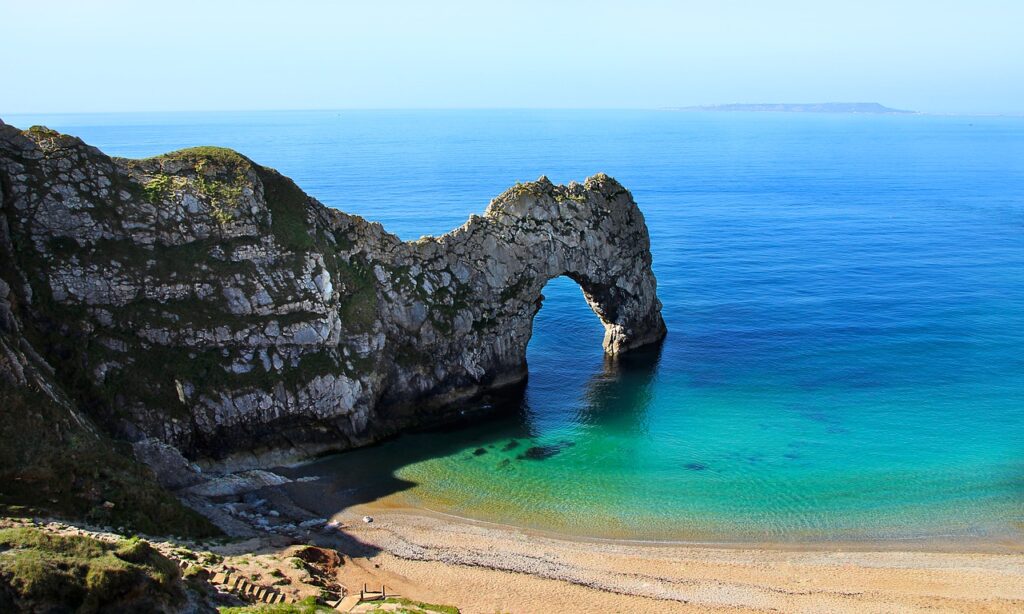
The Cotswolds
The Cotswolds covers an enormous area of 800 square miles, running through five counties – Gloucestershire, Oxfordshire, Warwickshire, Wiltshire and Worcestershire. Each region has its own identity but with defining Cotswold features such as the quintessentially English villages, magnificent landscapes and historic trails. There are more than 3,000 miles of footpaths and bridleways with woodland and meadows to explore. In Gloucestershire places to visit include Westonbirt Arboretum and Hidcote (both National Trust), Sudeley Castle and Gardens, Cotswold Water Park, Cotswold Farm Park and Birdland Park and Gardens. In Wiltshire, Bradford-on-Avon, Castle Combe, Corsham and Lacock are all in the Cotswolds.
South East
Sussex
Sussex is a fantastic county to explore with castles and historic houses, the South Downs National Park and Areas of Outstanding Natural Beauty. In West Sussex there’s Fishers Adventure Farm Park, Tulleys Farm, Go Ape and the Arundel Wetland Centre. Castles and historic places to visit include Nymans (National Trust), Wakehurst, Arundel Castle and Petworth House & Park (National Trust). Beaches in the region include West Wittering (a Blue Flag beach at the mouth of Chichester Harbour), East Head beach (next to West Wittering) and Littlehampton (a sand and shingle beach).
East Sussex is home to Drusillas Park with its one hundred exotic animals, the Bluebell Railway, Sea Life Brighton and the Blue Reef Aquarium Hastings. Other sights include the 1066 battle of Hastings Abbey & Battlefield, medieval castle Bodium, Rudyard Kipling’s family home the 17th century Bateman’s (National Trust), Newhaven Fort, The Royal Pavillion in Brighton, Herstmonceux Castle and its 300-acre estate and Michelham Priory. East Sussex’s most widely recognised beaches are Camber Sands (home to the only sand dunes in the region), Birling Gap (at the base of the Seven Sisters cliffs) and Brighton Beach (a pebbly beach with Blue Flag waters).
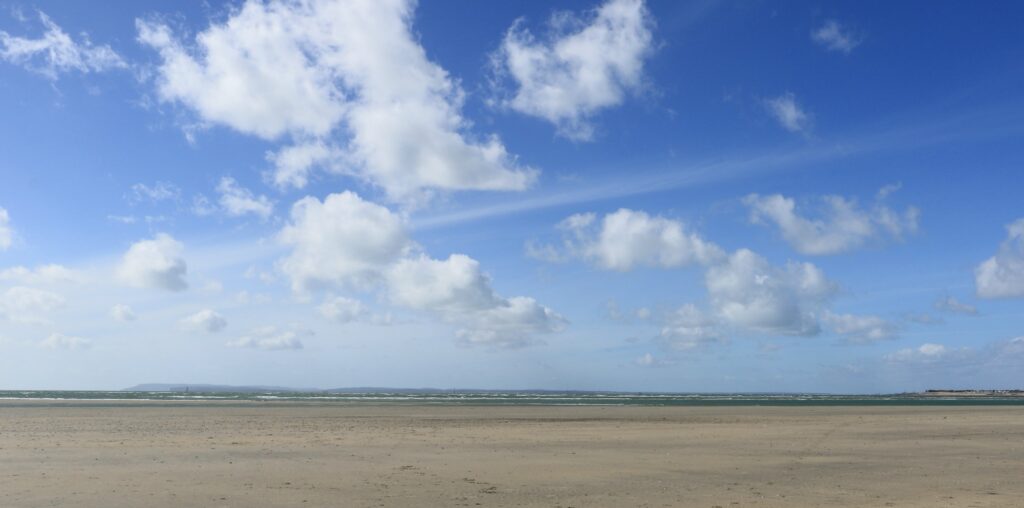
East of England
Norfolk coast
The Norfolk Coastal drive is around 56 miles, starts at Little Walsingham and leads to the 18th century Holkham Hall, nature reserve and sandy Holkham beach. This scenic route passes through villages like Cley and the Cley marshes, Blakeney and the seals at Morston Quay, Sheringham harbour, Cromer with its blue flag beaches, Holt and the 100 acre Holt Country Park, Baconsthorpe Castle and home to the Boleyn family Blickling Hall.
Suffolk
Suffolk is associated with a host of well-recognised names from Ed Sheeran, George Orwell and Delia Smith to Bob Hoskins, Ralph Fiennes and Richard Curtis. The county is famed for its archaeological finds, the most notable of which is Sutton Hoo where the remains of a ship containing Anglo-Saxon artefacts was discovered. In Suffolk, you can make the most of the great outdoors at Thetford Forest, Knettishall Heath Nature Reserve or Brandon Country Park. Explore the gardens at Ickworth House (National Trust), Kentwell Hall or Haughley Park. There are great beaches at Lowestoft, Felixstowe and Southwold. During the horseracing season, you can head to the tracks at Newmarket and see musicians play to the après racing crowds.
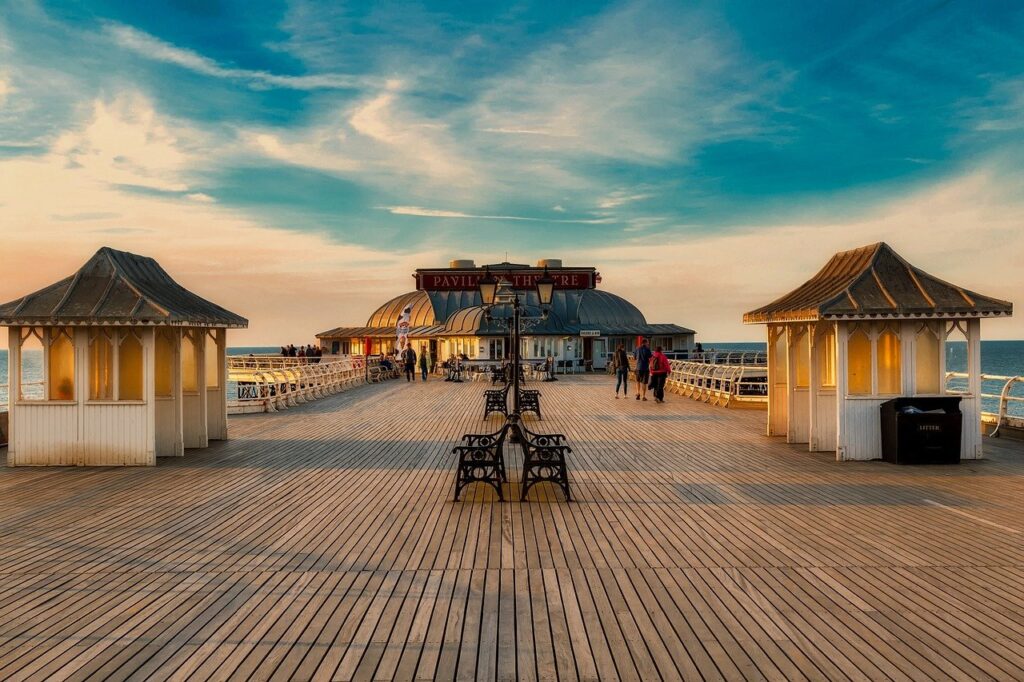
East Midlands
The Snake Pass, Peak District
The Snake Pass (A57) is the main road that runs from near the Ladybower Reservoir to Glossop in the Derbyshire section of the Peak District. Opened by King George VI in 1945, the Ladybower Reservoir is in the heart of the Peak District National Park in the Upper Derwent Valley. Surrounded by stunning countryside, the reservoir has a circular walking route of just over 5 miles which passes the impressive Derwent Dam. For epic views towards the Ladybower Reservoir and on a clear day Win Hill, park in New Road or Heatherdene car park and take the 2-mile walk to Bamford Edge. Other places to visit in the much loved Hope Valley include Treak Cliff Cavern, an underground wonderland of stalactites and stalagmites, Peveril Castle one of England’s earliest Norman fortresses with Chatsworth House, home to the Duke and Duchess of Devonshire, which is around 10 miles away.
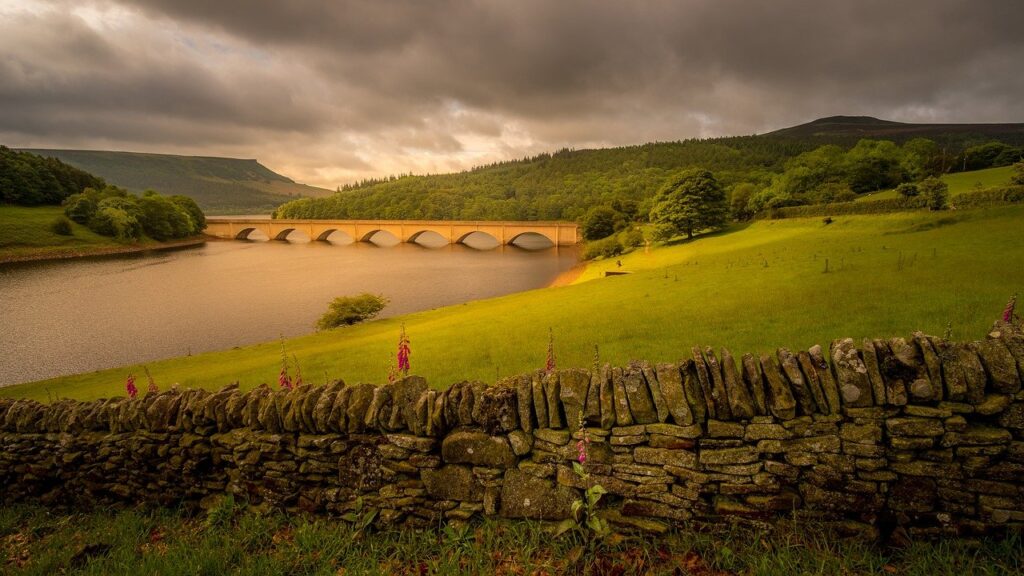
West Midlands
Malvern Hills
The Malvern Hills is an Area of Outstanding Natural Beauty and designated as a biological and geological Site of Special Scientific Interest. A trip to the Malverns would not be complete without taking to the hills and there are several routes to choose from. Whether it be the circular route around North Hill with views over Worcestershire, the Lickey and Clent Hills and the Black Mountains. There’s also a circular walk around the Worcestershire Beacon which offers views over Herefordshire with the likes of St Ann’s Well and the hidden Earnslaw pool en route. Elsewhere there are other walks to be had like the Knapp and Papermill Nature Reserve which is an old valley with meadows, woodland and an apple orchard. Or take a wander around the town. At the foot of the Malvern Hills is Eastnor Castle which is surrounded by a deer park, arboretum and lake. The dramatic ruins at Witley Court have elaborate parterre gardens, monumental fountains enchanting woodland.
Stratford-upon-Avon and Warwick Castle
The historic market town of Stratford-upon-Avon was the birthplace of William Shakespeare. Owned by the Shakespeare Birthplace Trust, the timber-framed house where he was born and spent his childhood includes rare artefacts and guides who bring Shakespeare’s story to life. There are three theatres in Stratford all owned by the Royal Shakespeare Company with the Royal Shakespeare Theatre showing many of the Bard’s famous works. The 500 year old family home of Anne Hathaway and where a young William Shakespeare visited during the early part of their relationship can also be visited. Less than ten miles away is Warwick Castle, one of the UK’s best known castles built by William the Conqueror in 1068 and used as a fortification until the early 17th century.
Wales
The Cambrian Way
Stretching some 185 miles from coast to coast, The Cambrian Way mainly follows the A470 through mid-Wales. This route starts from the seaside resort of Llandudno where you can take in the Great Orme views, explore Bodnant Hall, described by Prince Charles as one of Wales’ national treasures or head to Adventure Parc Snowdonia in the Conwy Valley. At Blaenau Ffestiniog, there’s an all-action adventure centre. Mountain bikers can head down the screes at Antur Stiniog, zip wires soar overhead at Zip World Titan and there’s an underground tour of ZipWorld Llechwedd. After exploring the market town of Brecon with its Georgian streets, you can head to the National Showcaves Centre where you’ll find the Dan-yr-Ogof Cave, Cathedral Cave and Bone Cave. Caerphilly Castle, The Royal Mint Experience and St Fagans National Museum of History are en route before reaching the capital city of Cardiff.
The Black Mountain Pass
The A4069 (Black Mountain Road) is located in the Black Mountains in the western part of the Brecon Beacons National Park. Running from Llandovery to Gwaun-cae-Gurwen (or vice versa), this 33.5-kilometre route offers stunning scenery around every bend. Also known as ‘the Top Gear road’, after Jeremy Clarkson was filmed driving it, the route is best tackled from north to south for the hairpin known as the Tro Gwcw (cuckoo turn) but also for the views of the Tywi Valley.
The Coastal Way
The Coastal Way is a 180-mile adventure running the length of Cardigan Bay between mountains and sea. Highlights along the way include harbour towns, galleries, castles, watersports and dolphins. At Abersoch is the sheltered hook at the tip of the Llŷn Peninsula AONB where you can hire pedalos or paddleboards from local sailing clubs. Criccieth Castle is perched on a headland between two beaches with Harlech Castle on a sheer rocky crag overlooking the dunes beneath it. Continuing down the coast, Barmouth has beaches and great views up the Mawddach Estuary. Aberystwyth is a pier-and-prom Georgian/Victorian resort where you can take the Cliff Railway up Constitution Hill. Cardigan itself is an old fishing port with a traditionally Welsh feel and a castle. Aberaeron is a town with a set of Regency buildings lining the harbour with St David’s the smallest city in Britain.
Llanberis Pass, Snowdonia
The Llanberis Pass is a fantastic journey that runs for 5 miles from Llanberis to Pen-y-Pass where you can find the Pyg and Miners tracks up Snowdon. The route passes directly between the Glyderau and Snowdon mountain ranges. Many fine crags are easily accessible on the route. These include Dinas y Gromlech, Carreg Wastad and Clogwyn y Grochan (the Three Cliffs) in the north. The Craig Ddu is further down. On the south side, Dinas Mot is the main cliff. At the bottom of the pass is the village of Nant Peris in the in the foothills of Mount Snowdon.
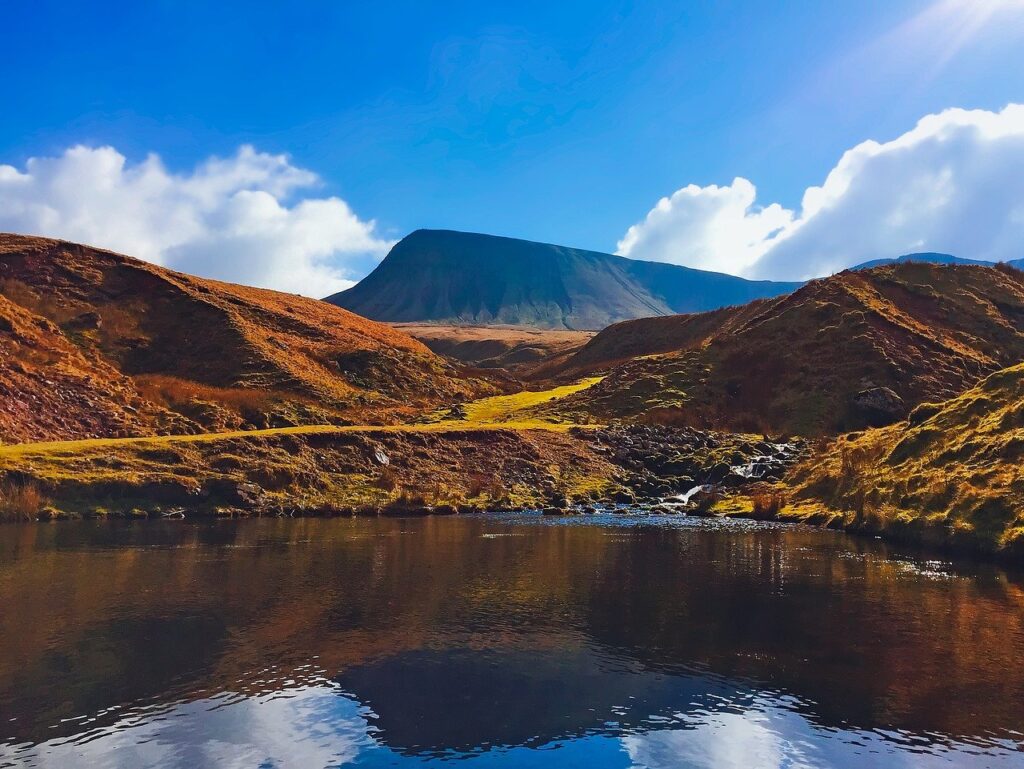
Yorkshire and the Humber
Yorkshire Dales
Yorkshire is well known for its magnificent scenery and natural wonders like dramatic valleys, ancient rock formations and natural amphitheatres. There are plenty of routes that will take you through picturesque towns and past lush meadows. It might be you travel from Harrogate to Knaresborough for a stroll by the River Nidd and onto Richmond for the castle and Culloden Tower. At Aysgarth there are the Aysgarth Falls with Hawes a charming market town before reaching the bustling town of Skipton. Malham is a scenic village to stop at before arriving in Settle for stunning views of the viaducts, cliffs and caves of the Dales. Alternatively, opt for the Buttertubs Pass which offers scenic views through the Yorkshire Dales and a summit of 1725 feet. Ribblehead Viaduct (or Batty Moss Viaduct) is one of Yorkshire’s most iconic landmarks. It carries the Settle–Carlisle railway across Batty Moss in the Ribble Valley and is featured in Harry Potter.
North West
Hardknott Pass
Hardknott Pass is a single track road with hills and hairpin bends in the Lake District National Park. It carries the minor motor road between Eskdale to the west and the Duddon Valley. It is the most direct route from the central Lake District to West Cumbria and is described as one of the most challenging roads in Britain (along with the Rosedale Chimney Bank in North Yorkshire).
Keswick to Kendal
The Keswick to Kendal route is described as one of the UK’s most beautiful road trips. Following the A591 it takes in Windermere (the largest lake in England) in Cumbria’s Lake District National Park, Rydal Water (popular due to the Wordsworth connection), Ambleside (one of the best bases for exploring the Lake District), Grasmere (where William and Dorothy Wordsworth lived) and the Thirlmere reservoir. Any of these would make a great stop-off.
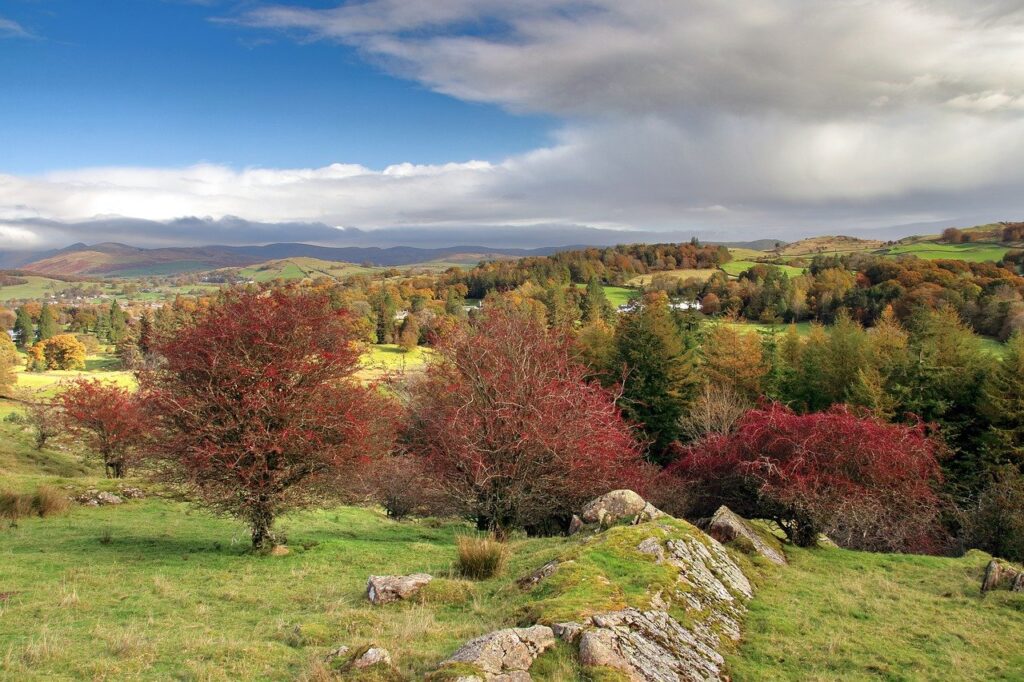
North East
Northumberland coast
The Northumberland Coastal Route spans over 60 miles from Cresswell in the south to Berwick-upon-Tweed in the north. Taking in the fishing town of “the friendliest port” Amble, there are boat trips, watersports and sailing with Druridge Bay a few miles south. Alnmouth has pastel houses along the River Aln, a beach and a range of wildlife. Home to the Duke of Northumberland, Alnwick is a pretty market town that boasts a castle used as a film location in Harry Potter and Downtown Abbey, gardens with a bamboo maze and a treehouse restaurant. The popular market town of Seahouses is 20 kilometres further on, just before reaching Bamburgh which is dominated by its castle which has been home to the Armstrong family since 1894.
Scotland
North Coast 500
The North Coast 500 is Scotland’s ultimate road trip comprising of 516 miles of white sandy beaches, coastal scenery and rugged mountains. The capital of the Scottish highlands, Inverness-shire is the start and end of the North Coast 500 route with castles, majestic mountains and the Loch Ness Monster! The Black Isle (not black or an isle) peninsula is steeped in history with Pictish stones, medieval stonework and 17th-century seaside villages. Chanonry Point is one of the best places in Scotland to spot dolphins.
With its views from the Fyrish monument and seals basking along the shoreline, Easter Ross has a pictish past with seaboard villages, the Pictish Trail and Glenmorangie whisky. Located on the most northeastern part, Caithness is a vast open landscape rich in archaeological remnants of a bygone age. Dunnet Head is the most northerly point of Mainland Britain with John O’Groats the most northerly village. Sutherland makes up a large part of the North Coast 500 with unspoilt, incredible landscapes and stretches of sand that rival those overseas. Wester Ross is a unique part of the route with hill lochs, mountain peaks and Mediterranean style beaches. It’s also home to Bealach na Bà, the single track road through the mountains of the Applecross Peninsula.
South West Coast 300
With miles of beautiful coastline, the South West Coast 300 offers charming coastal towns, sheltered bays and rocky stretches with stunning scenery along the way. A circular route along the coast of Dumfries & Galloway and into Ayrshire, the area takes in Galloway and Southern Ayrshire Biosphere and the Galloway Forest Park. Attractions en route include the Sweetheart Abbey which dates back to the 13th century, the Mull of Galloway lighthouse, Culzean Castle, the Scottish Dark Sky Observatory, the Grey Mare’s Tail Nature Reserve with one of the UK’s highest waterfalls and Moat Brae which is the birthplace of Peter Pan.
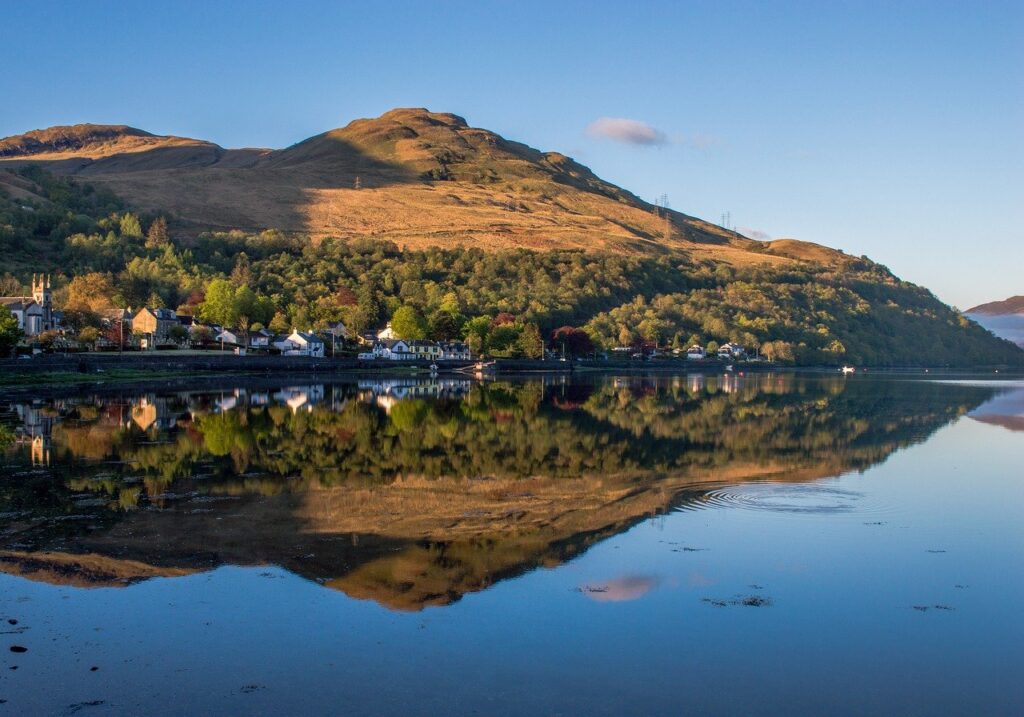
Northern Ireland
Causeway Coastal Route
This 120-mile route between Belfast and Londonderry takes in a wealth of attractions. From the Carrickfergus Castle, The Gobbins, Slemish, The Glens of Antrim, Torr Head, The Dark Hedges (of Game of Thrones fame), Carrick-a-Rede Rope Bridge, Whitepark Way, Giant’s Causeway, Dunluce Castle and the Old Bushmills Distillery. There’s also the option to travel a further 256 miles with a further nine additional scenic routes.
These road trips and scenic drives provide a great starter for ten when it comes to planning the next UK trip. Having ventured off on an impromptu roadtrip to the Isle of Arran in 2021, we certainly have Scotland in our sights. Where would you go first?
